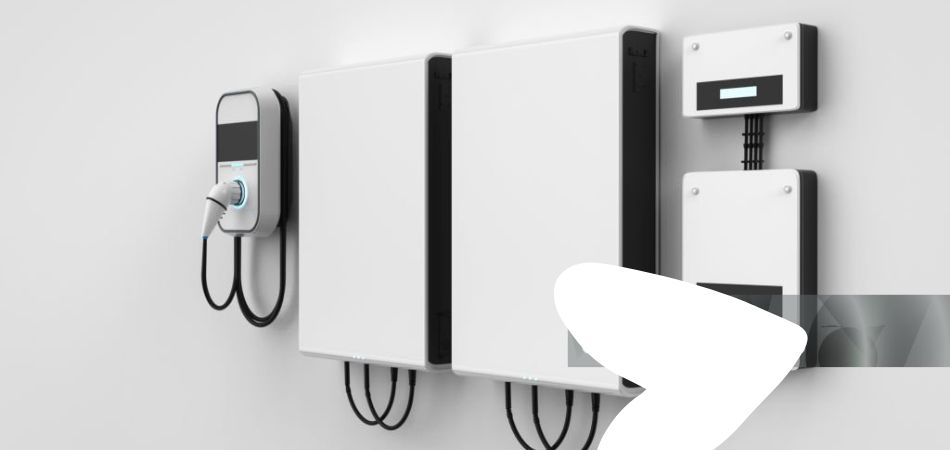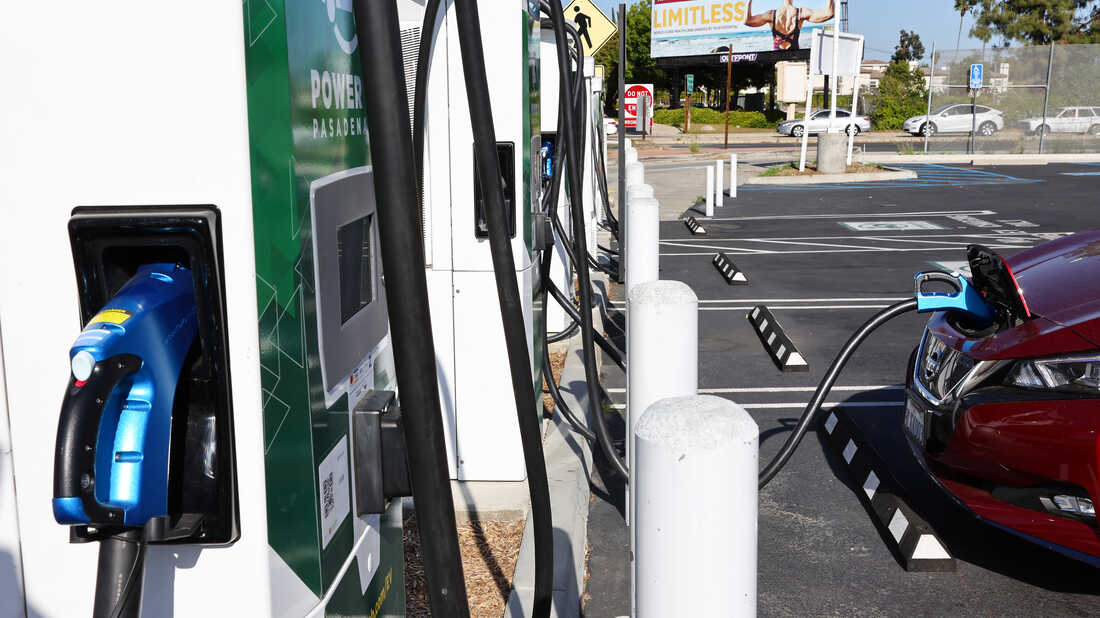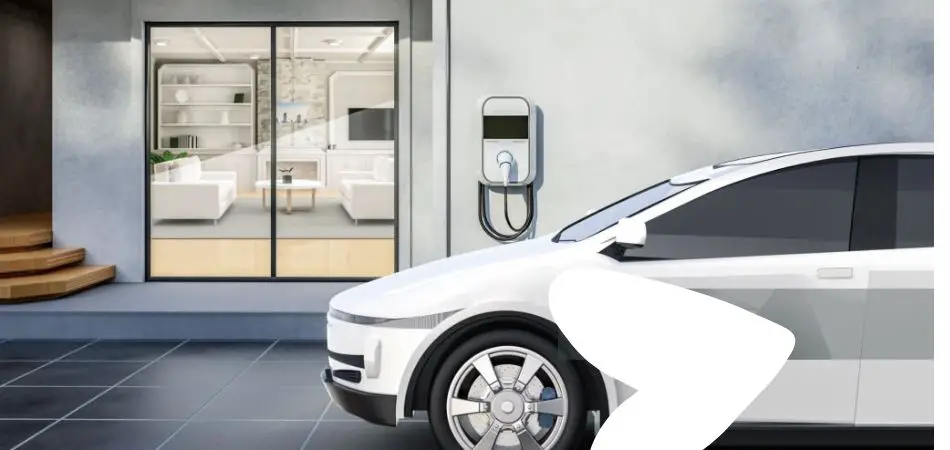Installation of an electric car charger is a straightforward process that requires professional assistance and adherence to local electrical codes. With the increasing popularity of electric vehicles, many homeowners and businesses are opting to install an electric car charger to conveniently charge their vehicles at home or in a commercial setting.
By hiring a qualified electrician, ensuring compliance with local regulations, and selecting the appropriate charger for your vehicle, you can easily install an electric car charger and enjoy the benefits of eco-friendly transportation.
The Growing Popularity Of Electric Vehicles
In recent years, electric vehicles (EVs) have surged in popularity, transforming the way we think about transportation. As concerns over environmental sustainability and the push for cleaner energy sources continue to grow, EVs have become a symbol of a greener, more sustainable future.
The Need For Convenient Charging Solutions
The Need for Convenient Charging Solutions: In our fast-paced digital world, the demand for accessible and hassle-free charging solutions has never been greater. Explore the growing necessity for convenient charging options in our daily lives.
Understanding Level 1, Level 2, And Dc Fast Charging
Understanding Level 1, Level 2, and DC Fast Charging
When it comes to charging your electric vehicle (EV) at home or at public charging stations, it’s important to understand the different charging levels available. The three most common charging levels are Level 1, Level 2, and DC Fast Charging. Each level offers varying charging speeds and capabilities, allowing you to choose the option that best suits your needs.
Different Charging Levels And Their Capabilities
Let’s dive into each of these charging levels and explore their unique capabilities:
Level 1 Charging
Level 1 charging is the most basic form of charging and is typically done using a standard household outlet. This charging level provides a low charging speed of about 4 to 6 miles of range per hour (depending on the vehicle). Level 1 charging is often the slowest option, making it ideal for overnight charging or when you have plenty of time for your vehicle to recharge.
- Convenience – You can plug your EV into any standard household outlet.
- Low installation cost – No additional equipment or electrical upgrades are usually required.
- Slow charging speed – It takes a significant amount of time to fully charge your EV.
- Not suitable for long-distance travel – Level 1 charging may not provide enough range for extended trips.
level 2 Charging
Level 2 charging offers faster charging speeds than Level 1 and requires the installation of a dedicated charging station. This level is the most common choice for residential charging as well as public charging stations. Level 2 charging delivers around 20 to 30 miles of range per hour, allowing for quicker vehicle recharging.
- Faster charging speed – Level 2 charging reduces the time required to fully charge your EV.
- Increased range for daily driving – With a higher charging speed, you can conveniently charge your vehicle overnight and have enough range for your daily commuting or errands.
- Flexibility – Level 2 charging stations are widely available and can be installed at home or at public locations.
- Higher installation cost – Level 2 charging requires the installation of a dedicated charging station, which may involve electrical modifications and professional help.
- Not suitable for long road trips – Level 2 charging may not provide enough charging speed for extended journeys.
Dc Fast Charging
DC Fast Charging, also known as Level 3 charging, provides the fastest charging speeds available for EVs. This level of charging is typically found in public charging stations rather than residential settings. DC Fast Chargers can deliver an impressive 60 to 80 miles of range in just 20 minutes of charging time.
- Ultra-fast charging speed – DC Fast Charging provides rapid recharging, making it convenient for long road trips.
- Extended range for longer travel – With its high charging speed, DC Fast Charging allows you to quickly top up your EV’s battery while on the go.
- Higher installation and operational costs – DC Fast Charging stations require expensive equipment and infrastructure, resulting in higher charging costs.
- Not universally compatible – Not all EV models are compatible with DC Fast Charging, so it’s important to check if your vehicle supports this charging level.
- Increased wear on the battery – Rapid charging can put additional stress on the battery, potentially reducing its overall lifespan.
By understanding the capabilities and pros and cons of each charging level, you can make an informed decision when it comes to installing an electric car charger. Consider your specific charging needs, budget, and long-term goals to choose the charging level that suits you best.
Assessing Your Electrical System
Assessing your electrical system is essential for the installation of an electric car charger. This process ensures compatibility, safety, and efficiency, allowing you to make informed decisions for a seamless charging experience.

Before you can enjoy the convenience of an electric car charger at home, it’s crucial to assess your electrical system to ensure it can safely support the charger’s energy requirements. Assessing your electrical system will help you determine the electrical capacity of your home and whether you need to upgrade your electrical panel. These considerations are essential for a seamless and efficient installation process.
Electrical Capacity Of Your Home
Understanding the electrical capacity of your home is the first step in assessing your electrical system. This capacity is measured in volts and amps, and it determines the amount of electricity your home can handle at any given time. To determine your home’s electrical capacity, you can refer to your electrical panel or consult with a qualified electrician.
The electrical capacity of a typical residential home is 100 to 200 amps. However, older homes or those with outdated electrical systems may have lower capacities. It’s important to know your home’s capacity as it sets the foundation for installing an electric car charger that meets your vehicle’s charging needs.
Upgrading Your Electrical Panel If Necessary
If your home’s electrical capacity is insufficient to accommodate an electric car charger, upgrading your electrical panel may be necessary. An electrical panel, commonly known as a breaker box, is the central point that distributes electricity throughout your home. It ensures electricity is delivered safely and efficiently to various circuits.
Upgrading your electrical panel involves increasing its amp capacity to meet the requirements of an electric car charger. This process typically involves replacing the existing panel with a higher-capacity one, which requires the expertise of a licensed electrician.
While upgrading your electrical panel may involve some cost, it is essential for the smooth functioning of an electric car charger. It ensures your charger receives the necessary power to efficiently charge your electric vehicle, preventing any potential instances of overloaded circuits or electrical hazards.
Before proceeding with any electrical upgrades, consult with a qualified electrician who can evaluate your home’s electrical system and provide expert guidance on the necessary steps. They will assess factors such as the age and condition of your electrical panel, the wiring in your home, and the specific requirements of your electric car charger.
Assessing your electrical system and understanding its capacity are crucial steps in ensuring a successful electric car charger installation. By determining your home’s electrical capacity and upgrading your electrical panel if necessary, you can enjoy the convenience and efficiency of charging your electric vehicle right in your own garage.
Selecting The Ideal Location
Choosing the right location is crucial for the successful installation of an electric car charger. Consider factors like accessibility, available power supply, and proximity to your parking spot to ensure a seamless charging experience.

Installation of an electric car charger: Installation Process
The Electric Car Charger Installation Process
Switching to an electric car? Here’s a quick overview of the installation process:
- Evaluate Your Electrical System: Check if you have the required 240-volt circuit.
- Choose Your Charger: Select a charger that suits your car and preferences.
- Pick the Right Location: Consider convenience and local regulations for charger placement.
- Hire a Professional: An electrician will handle the installation and any necessary upgrades.
- Permits and Inspections: Ensure compliance with local codes, permits, and inspections.
- Charger Installation: Your electrician will install and test the charger.
- Maintenance: Keep your charger in good condition and plan for future upgrades.
This simple guide will help you seamlessly transition to electric vehicle ownership.
Compliance With Electrical Codes And Regulations
The installation of an electric car charger must adhere to strict compliance with electrical codes and regulations to ensure safety and efficiency. By meeting these standards, you can confidently charge your electric vehicle while minimizing the risk of electrical hazards.

Understanding Local Electrical Codes And Regulations
When it comes to the installation of an electric car charger, it is of utmost importance to understand and comply with all the local electrical codes and regulations. These codes and regulations are put in place to ensure the safety and effectiveness of the charging infrastructure, protecting both the users and the electrical system.
Before diving into the installation process, it is crucial to familiarize yourself with the specific electrical codes and regulations enforced by your local authorities. These codes may vary from one jurisdiction to another, so taking the time to understand them will help you avoid any potential violations and setbacks.
Permits And Inspections Required For Installation
In order to ensure compliance with the electrical codes and regulations, obtaining the necessary permits and undergoing inspections is a fundamental step in the installation process of an electric car charger. These permits and inspections are conducted by local authorities to verify that the installation meets the required standards.
Before commencing the installation, it is essential to check with your local building department or electrical regulatory authority to determine the permits and inspections that are required. It is important to note that failing to obtain the necessary permits or neglecting inspections can result in penalties and even the removal of the charger.
During the inspection process, an electrical inspector will evaluate the installation to confirm its compliance with the applicable codes and regulations. This inspection ensures that the charger is correctly wired, grounded, and capable of safely delivering the required electrical power.
It is worth mentioning that some jurisdictions may also require additional documentation, such as load calculations or a letter of compliance from a licensed electrician. Adhering to these requirements is crucial to ensure the approval of your installation and to operate the charger legally.
By following the necessary processes and obtaining the required permits and inspections, you can rest assured that your electric car charger installation complies with the electrical codes and regulations established by your local authorities.
This compliance not only ensures the safety of users and the electrical system but also contributes to the overall development of a sustainable and efficient charging infrastructure.
Best Practices For Safe Charging
Discover the best practices for safe charging of your electric car charger. Ensure a secure and efficient installation process for optimal performance and peace of mind. Trust in these expert guidelines to power your vehicle with confidence.

Proper Cable Management To Prevent Tripping Hazards
One of the best practices for safe charging of an electric car is to ensure proper cable management to prevent tripping hazards. A tangled cable lying on the ground not only poses a risk of tripping but also increases the likelihood of damage to the charger and cable itself. To avoid such incidents, it is essential to follow a few simple steps:
- Avoid placing the cable across walkways or driveways: Whenever possible, position the cable away from high-traffic areas to minimize the risk of someone tripping over it. If laying the cable across a pathway is unavoidable, secure it with cable management clips or a cable protector.
- Keep the cable organized: Prevent cable tangling by using cable organizers or Velcro straps. This not only makes for a neater setup but also reduces the chances of accidents caused by people inadvertently stepping on or tripping over the cable.
- Choose the right length of cable: Opt for a cable length that is appropriate for your charging needs without excessive slack. Excess cables can create unnecessary hazards, while a cable that is too short may not reach the charging port comfortably.
By following these simple cable management practices, you can maintain a safe environment while charging your electric vehicle.
Protecting The Charger From Extreme Weather Conditions
Another important best practice for safe charging is to protect the charger from extreme weather conditions. Extreme temperatures, whether too hot or too cold, can have a detrimental effect on the lifespan and performance of the charger. Here are a few recommendations:
- Seek covered or shaded charging locations: Whenever possible, park your electric vehicle in a covered area or under the shade to protect the charger from direct exposure to harsh weather elements like strong sunlight, heavy rain, or snow.
- Invest in a weatherproof charger enclosure: If your charging station is located in an area with no natural cover, consider purchasing a weatherproof enclosure for your charger. These enclosures are designed to shield the charger from rain, snow, and other environmental hazards.
- Ensure proper ventilation: While protecting the charger from extreme weather is crucial, it is equally important to provide adequate ventilation. Overheating can still occur within the enclosure, affecting the charger’s performance. Ensure sufficient airflow by placing the enclosure in a well-ventilated area.
By implementing these measures, you can extend the life of your charger and maintain its optimal functionality, which ultimately leads to safer charging sessions.
Frequently Asked Questions On Installation of an Electric Car Charger
Q1# Can You Install An Electric Car Charger Yourself?
Yes, you can install an electric car charger yourself. Just make sure to follow the manufacturer’s instructions carefully and ensure that you have the necessary knowledge and tools. It’s also recommended to consult with a licensed electrician for proper installation and safety measures.
Q2# How Much Is It To Put In A Charging Port For An Electric Car?
The cost of installing a charging port for an electric car varies depending on the specific requirements, location, and existing infrastructure. It is recommended to obtain quotes from qualified electricians or charging station installation companies for an exact price.
Q3# How Long Does It Take To Install An Electric Car Charging Port?
It typically takes about 3-5 hours to install an electric car charging port.
Q4# Can I Install A Fast Ev Charger At Home?
Yes, you can install a fast EV charger at home. It allows for quick charging of your electric vehicle, providing convenience and minimizing charging time. Installing a fast charger ensures a more efficient and speedy charging process for your EV within the comfort of your own home.
Final Verdict
Switching to an electric car is not only an environmentally friendly choice but also a cost-effective one. With the installation of an electric car charger, you can conveniently recharge your vehicle at home, saving time and money. By opting for this sustainable solution, you contribute to the reduction of harmful emissions and the overall improvement of air quality.
Embrace the future of transportation and make the switch to electric vehicles today.







